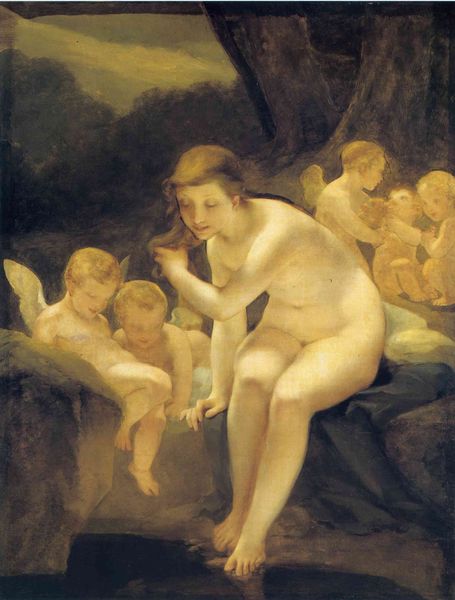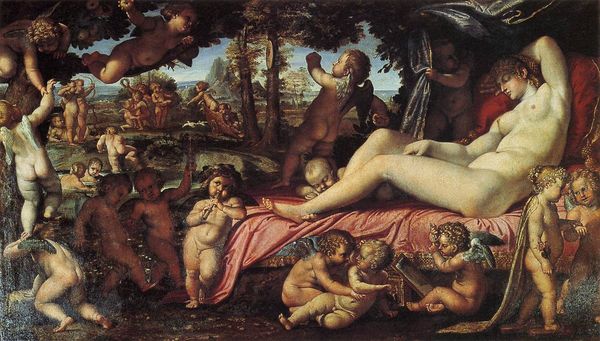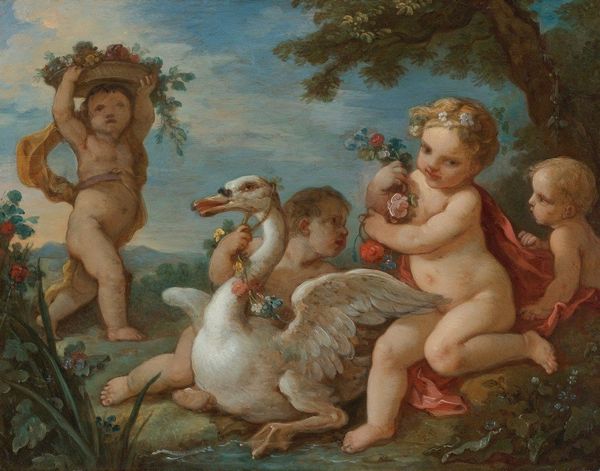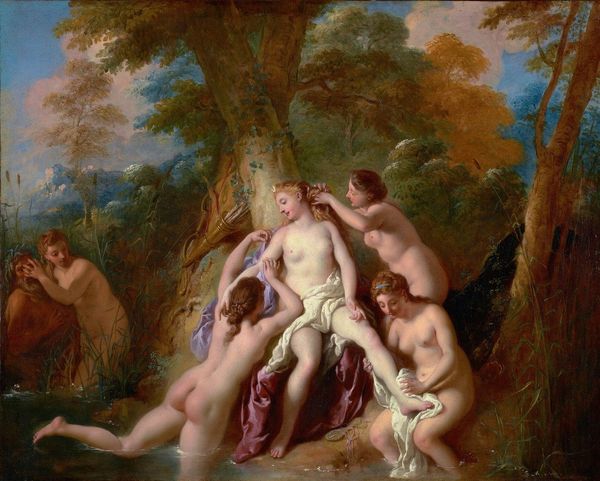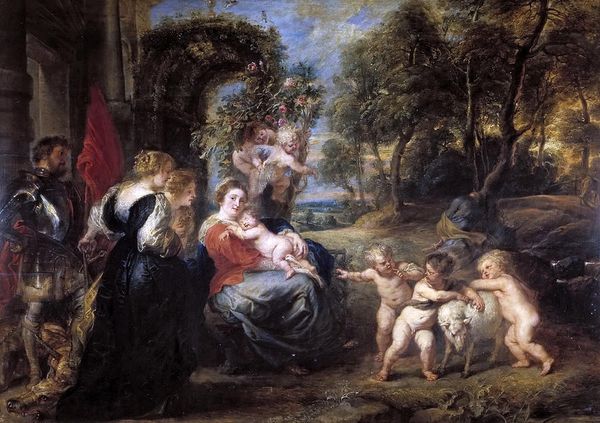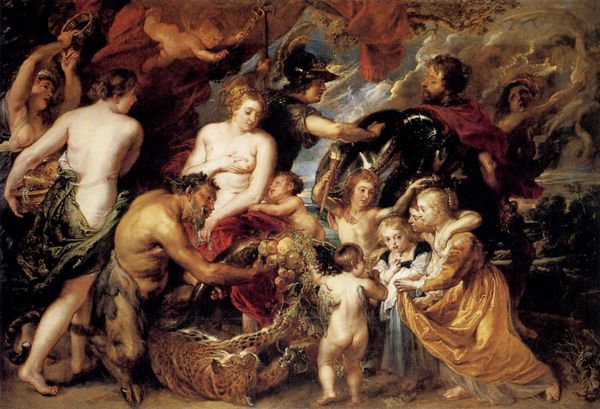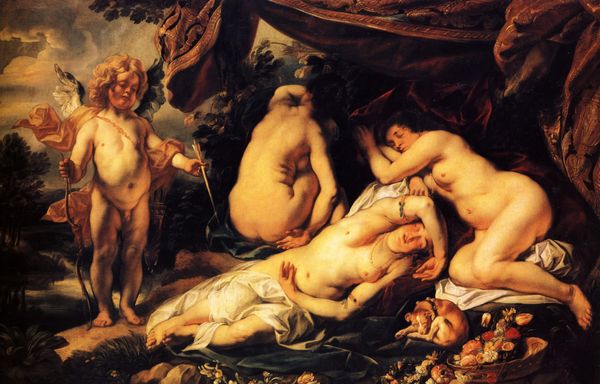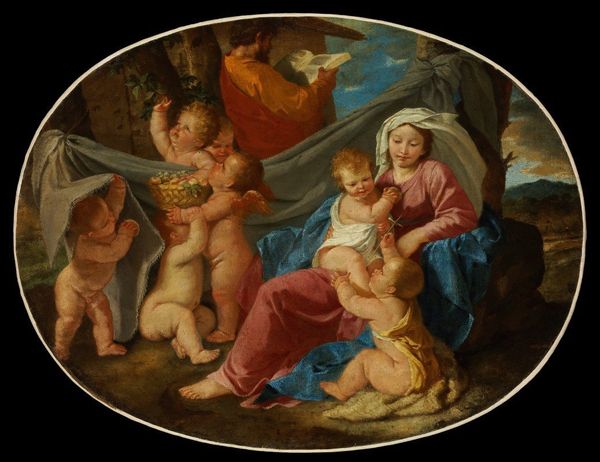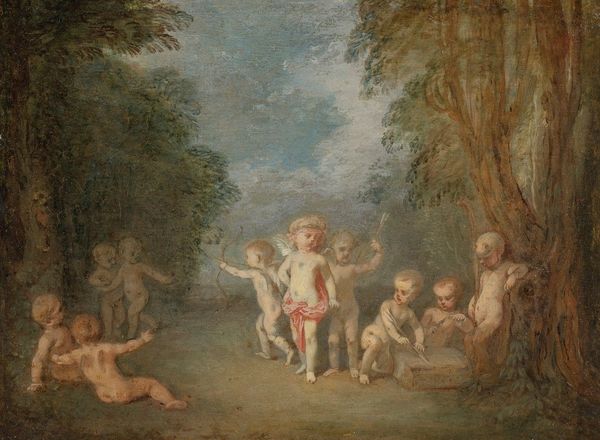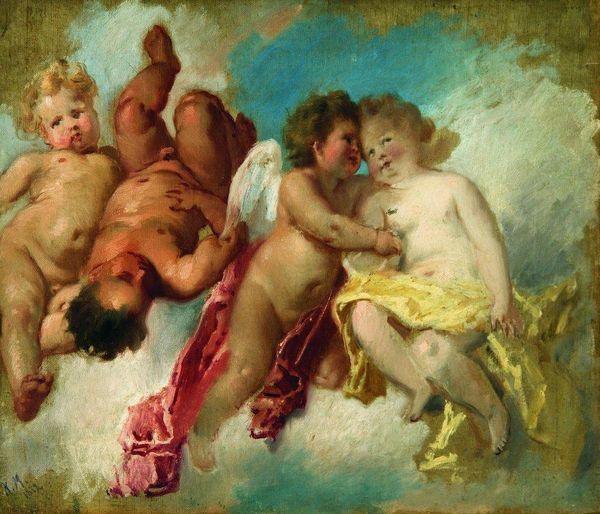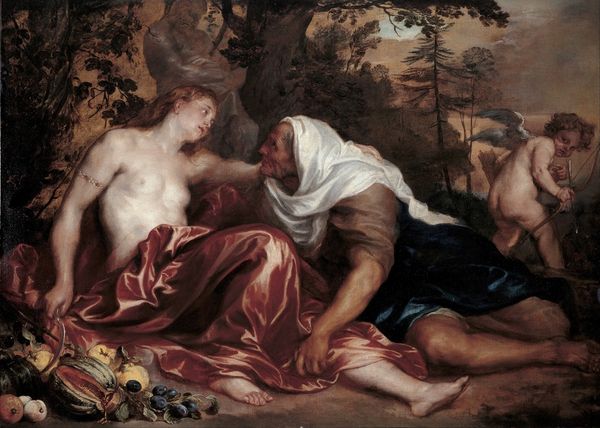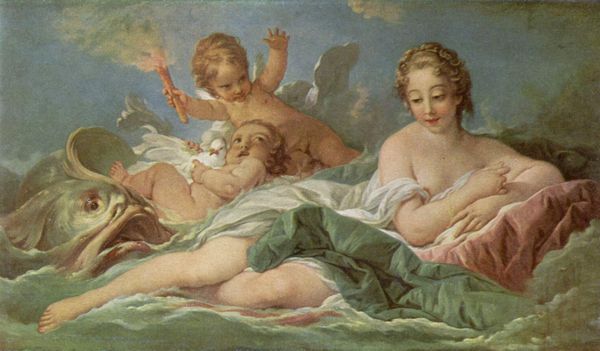
painting, oil-paint
#
allegory
#
baroque
#
painting
#
oil-paint
#
figuration
#
oil painting
#
cupid
#
group-portraits
#
mythology
Copyright: Public domain
Curator: Standing before us is Peter Paul Rubens’s “Christ and St. John with Angels,” an oil painting from around 1620. It’s currently held in the Kunsthistorisches Museum in Vienna. Editor: My initial response is one of radiant warmth. The plump figures, the abundance of fruit, the general curvaceousness—it exudes a life-affirming, almost earthly sensuality, wouldn't you agree? Curator: Absolutely. This painting is teeming with visual symbols deeply embedded in Christian theology. The lamb, of course, is an ancient symbol of Christ's sacrifice. We also see him as a child along with St. John the Baptist as a child. Even the grapes speak to the Eucharist, and the fruits represent the bounty of paradise, the garden of Eden. Editor: The formal qualities work perfectly to convey that sense of abundance. The composition itself is a tightly packed pyramid of bodies, almost bursting from the canvas. Note the impasto technique, the thickness of the oil paint gives dimension, light seems to emanate from within their flesh. How does the psychology of these repeated figures as the “putti” evoke our interpretation? Curator: That’s very insightful! This depiction goes beyond mere illustration; the cherubic children can often symbolize divine love, innocent joy, and playfulness within the realm of the sacred. Reappearing in Renaissance and Baroque works alike, "putti" become familiar messengers of faith and continuity of tradition. Here Rubens is grounding divine concepts in human experience. Editor: Yes, their presence speaks to a specific moment in cultural time. Yet, these same stylistic elements like chiaroscuro—strong contrasts of light and shadow—creates a dramatic intensity despite the idyllic subject matter. It heightens the emotional impact, infusing the scene with energy. Curator: Rubens was so skilled at capturing these psychological depths of religious imagery, using recognizable patterns of form across varied artworks that we immediately understand to be of cultural significance. It's what gives this piece such lasting appeal and power, even centuries later. Editor: Ultimately, what began as simple abundance revealed deeper structures! The painting's appeal stems not just from its beauty, but also from how those pictorial elements express so much beyond representation, don't you think?
Comments
No comments
Be the first to comment and join the conversation on the ultimate creative platform.

